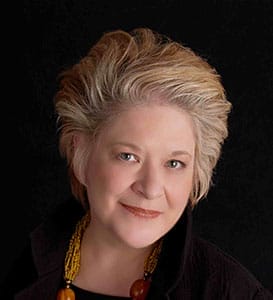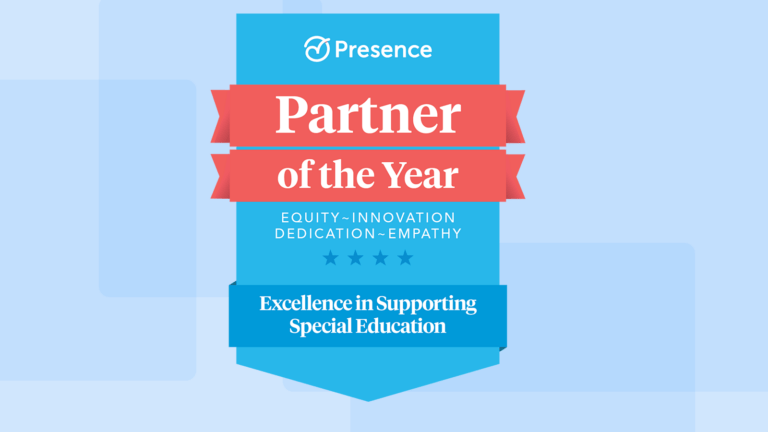
The first webinar in our Success for Every Learner: From At-Risk to Successful webinar series was led by one of the nation’s leading consultants on inclusionary practices, Dr. Frances Stetson. During “Inclusion is for Every Learner – Or Is It?,” Dr. Stetson discussed inclusionary practices and inappropriate identification of students for special education services. Her webinar also explored how schools should use a cultural lens to examine practices currently in place for supporting at-risk students. After the webinar, our co-founder and co-CEO Clay Whitehead moderated questions from webinar participants for Dr. Stetson.
Below is a summary of their discussion.
CW: What criteria could indicate that a student with special needs is better supported in an all-day segregated program or an inclusion model? Is there research that shows when it is most appropriate to keep a learner in the self-contained setting?
FS: That’s a really great question, because there is increasing diversity of students and their needs. I see why educators want a clear answer, but there really isn’t one. However, this is to the student’s advantage. Every decision a teacher or therapist makes in special education must be individually determined based on the student’s need, so deciding if a student should be in a segregated or inclusion program should be based on a few considerations.
First, ask yourself if you have exhausted all options and strategies inside the general education classroom. Have you tried all of the instructional, behavioral, or personal support tactics that are appropriate for the student in order to make a successful environment? For example, let’s say a student has one or more progress goals they need to meet. If possible, a suitable solution may be to have the teacher pull the student to the back of them room and work with them one-on-one instead of pulling them out of class for intervention.
Secondly, if a student does leave class for segregated work, ask yourself if the intervention is worth the time outside of class. Is it very focused and specific? Is it something that’s designed to really help the student stay as close to the curriculum framework as possible? If it’s just remedial work, this could potentially be done in class.
Additionally, I think all educators need to be carefully trained to look at the grade level of standards-based learner objectives and scale their lessons. Teachers should ask themselves if it is possible to create a lesson based on a learner objective, but also modify it for students who may be a grade level or two below the rest of the class. This flexibility on the teacher’s part could save the student from leaving the general education classroom.
An educator’s goal is to create a classroom that is appropriate and beneficial for all students, but honestly, if a student needs some targeted help outside of the general education classroom, then the teacher needs to feel good that they made this decision on the basis of what that individual child needs.
CW: When thinking of at-risk students, is there something that stands out to you as to why students of color are more likely to be at-risk?
FS: I really want to make this point very clear: the difficulty that a student of color may be experiencing at school is not related to some inherent limitation in his or her race, culture, or language. It is actually related to limited access to resources and opportunities. Over time, the cumulative effects of differential access to resources can present themselves in a student’s academic performance. Again, it’s not the child, and educators and therapists need to help them overcome this.
CW: What is the most important thing administrators and educators can do to reduce instances of inappropriate identification of students of color for special education or disciplinary action?
FS: I’ve been speaking a great deal recently to principals about this subject, and one of the things that I would say is first, teachers must be equipped with knowledge of social issues and acceptance of cultural differences. Do they understand cultural proficiency and white privilege? Do they understand that if they have a negative or biased attitude toward a student that the child will recognize this and feel a sense of dislike or rejection from their teacher?
Schools also need to keep better records, analyze data, and drill down when necessary. For example, administrators and therapists should be analyzing data to determine if there are particular teachers or grade levels submitting an inordinate number of referrals for students of color. If this is happening, administrators and therapists should talk to these teachers or grades and have an honest conversation about their referral patterns. Ask them the reason why they are referring these students and then provide them with the support they need to change their practices, such as individual coaching.
The industry is finally at a point where educators and administrators have to call it out and ask, “What’s happening here? What is leading to these referrals that truly are not representative of student needs?”
CW: Let’s talk more about behavior. Behavior seems to be our largest barrier to inclusion. How can our teachers become more responsive in the ever growing world of accountability?
FS: Every school should have bedrock practices in place that mediate the incidences and severity of behavior issues. For example, positive behavioral supports need to be in place in every school. I still go to many schools that have totally different behavior rules from classroom to classroom. Or there may not be any behavior rules in the cafeteria, but there are in the hallway. Positive behavioral supports have been around for a long time and when implemented with fidelity, can be very helpful.
Also, teachers cannot assume students already know these school-wide behavior expectations because very often, students don’t. Educators and administrators must specifically identify behavior expectations, explicitly teach them and consistently reinforce them schoolwide.
The second part of the question mentioned “the ever growing world of accountability.” There is definitely a direct connection between behavioral issues in the classroom and the quality of instruction and student engagement, which of course is our measurement for accountability. When teachers have better instruction, students have better behavior.
CW: How can schools change general education teachers’ mindsets that students with special needs should be segregated from the general education classroom?
FS: First of all, I think all educators want what’s best for their students, but general educators may see the implementation of inclusionary practices as a challenge, which may make them somewhat resistant. Some teachers question if they are prepared for it, which makes them more reluctant, and for some, inclusionary practices may be against their core educational beliefs so this adjustment takes time. However, I think the biggest reason why general education teachers are reluctant about inclusion is because they are not given the opportunities to develop authentic and meaningful relationships with students with special needs.
Schools need to create these opportunities for general education teachers. When teachers see students with special needs as individuals with different personalities, interests, and needs, their attitudes often change. They stop asking themselves if they have the proper training to teach someone with special needs and start to see them as students who need to learn. Schools just have to increase teachers’ comfort zone for diversity in the classroom.
CW: How can educators ensure students are prepared for job interviews, the workplace, and upper mobility when there may be social stigmas attached to the way they speak, for instance if their language reflects their culture and not standard American English?
FS: During the webinar, an attendee asked, “As a speech language pathologist working on deficits in syntax, semantics, and morphology with my students, is it appropriate to teach the students how to adjust, or switch, their oral formulation of language to the audience to which they are speaking?” Many of my students will say they speak differently in “the hood” than they speak while presenting in class. I think that’s a beautiful answer. Some students may use two or even three of these different languages, but we don’t want to denigrate any languages they use. Educators have to understand this is part of the culture, but should also help students learn to use a different language for the workplace, the classroom, and the community.
CW: Is inclusion appropriate at any age level, even preschool? Is there evidence that this works?
FS: Absolutely! One of the phrases I love to use in my training is, “We’re no longer arguing whether we should include young children. It’s not a matter of how do we get it done, and how do we do it well.”
CW: In a perfect world, what would special education services look like? Do you think what you describe is possible?
FS: Let’s take out the word, “perfect.” Let’s just say “in a world in which we’re following quality, research-based practices that are backed by promises of equity and excellence for all students.” I see wonderful teachers working toward this every day, but to be candid, striving for this ideal special education model is one of the most challenging things happening in schools today. I think it takes every ounce of administrators’ and teachers’ creativity and commitment to students, and I believe that schools are already seeing changes in practice and commitment. Principals are sitting down with teachers and really looking at individual student needs and teachers are assessing the quality of their practices.
I do believe it will be a reality at some point, but first, I think there has to be a shift in those core beliefs about general and special education in order to put strategies in place. If teachers don’t want to implement inclusion because they don’t value it or because they inherently believe that some children shouldn’t have access to opportunities to be with their peers even at a social level, then that teacher’s willingness and ability to implement great inclusionary teaching practices is diminished.
It was predicted years ago that the least restrictive environment or the inclusion piece of the Individuals with Disabilities Act was going to be the most difficult one to implement, and that’s certainly been true.
CW: Let’s follow up on that legislative thread. What do you think will be the impact of the new ESSA legislation?
FS: I think ESSA is giving more latitude back to the states and school districts about the accountability measures and timeframes. As much as I supported No Child Left Behind, I did not like the level of tension and stress it created. Educators and therapists were leaving the field because there were some fairly tough and arbitrary standards that were very difficult for them to meet.
I hope things calm down a bit so educators, administrators, and state departments can really focus on the work to be done, but the one thing I really love about ESSA is that it does not take away the education system’s accountability to close the achievement gap for all students. It’s still accountable for good teaching, being inclusive, and all of those practices we’ve come to understand through the previous accountability system. Also, it gives educators some belief that they are not asked to meet certain standards within seemingly impossible timelines.
CW: We’ve got time for one more question. Is disproportionality a regional issue or is it a concern across the entire U.S.?
FS: It’s a concern across the entire country. I have not looked at a state-by-state analysis, but I would urge you to access the latest annual report to Congress on the Individuals with Disabilities Act. It will report on disproportionality by state.
To watch Dr. Stetson’s entire 90-minute webinar, click here. To learn more about the two upcoming webinars included in this series, click here.



